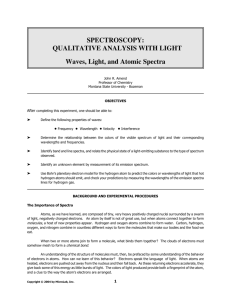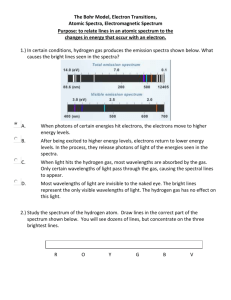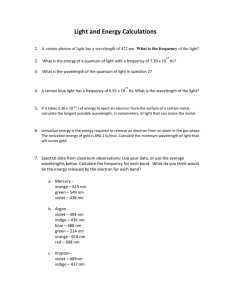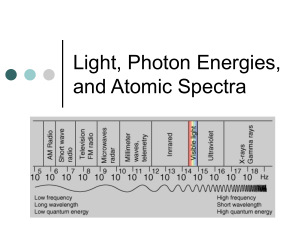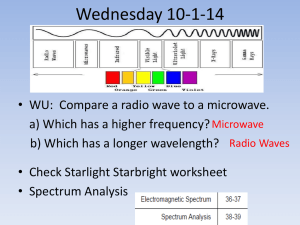ATOMIC SPECTRA AND ELECTRON ENERGIES
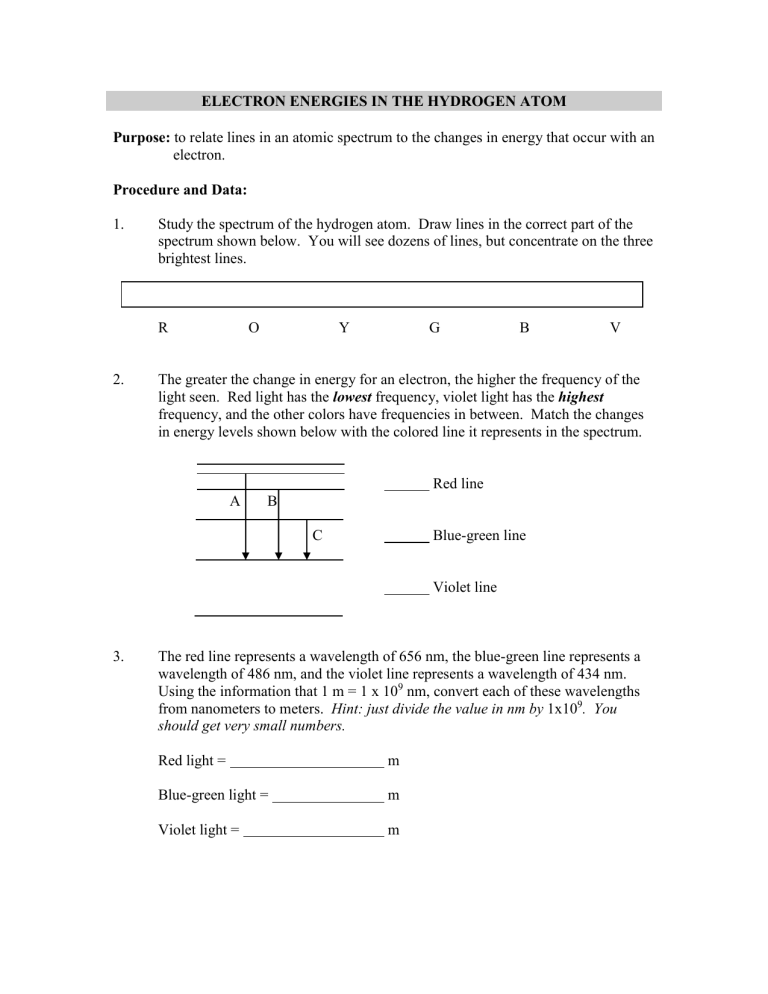
ELECTRON ENERGIES IN THE HYDROGEN ATOM
Purpose: to relate lines in an atomic spectrum to the changes in energy that occur with an
electron.
Procedure and Data:
1.
Study the spectrum of the hydrogen atom. Draw lines in the correct part of the spectrum shown below. You will see dozens of lines, but concentrate on the three brightest lines.
R O Y G B V
2.
The greater the change in energy for an electron, the higher the frequency of the light seen. Red light has the lowest frequency, violet light has the highest frequency, and the other colors have frequencies in between. Match the changes in energy levels shown below with the colored line it represents in the spectrum.
Red line
A B
C Blue-green line
Violet line
3.
The red line represents a wavelength of 656 nm, the blue-green line represents a wavelength of 486 nm, and the violet line represents a wavelength of 434 nm.
Using the information that 1 m = 1 x 10 9 nm, convert each of these wavelengths from nanometers to meters. Hint: just divide the value in nm by 1x10
9
. You should get very small numbers.
m Red light =
Blue-green light =
Violet light =
m
m
4.
Calculate the frequency of each color of light using this equation:
Frequency = speed of light = 3 x 10 8 m wavelength wavelength
Frequency of red light Hz
Frequency of blue-green light
Energy of red light
Energy of blue-green light
Hz
Frequency of violet light Hz
5.
Calculate the energy of each color of light using the equation E = h
, where h =
Planck’s constant (6.626 x 10 -34 J s) and
is the frequency of the light.
J
J
2.
Energy of violet light J
Conclusions:
1. Notice the energy change for an electron moving in two energy levels (from energy level 4 to energy level 2) compared to the energy change for an electron moving in only one energy level (from energy level 3 to energy level 1). Why doesn’t the electron lose twice as much energy when it moves in two levels as it loses when it moves only one energy level?
Hint: look at the diagram of energy levels.
Is the relationship between energy and frequency a direct or an inverse relationship?
